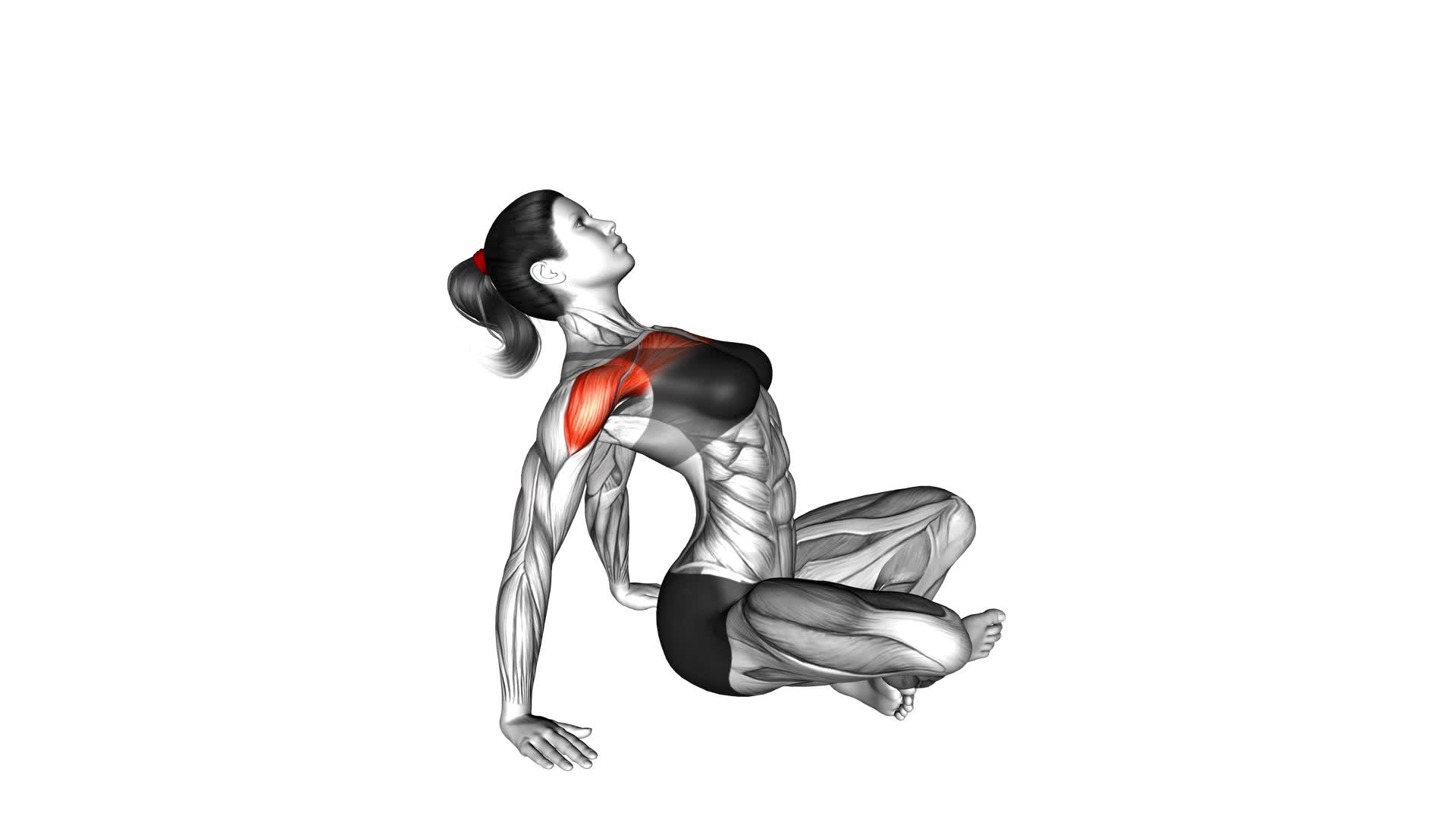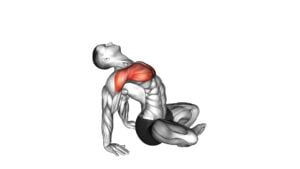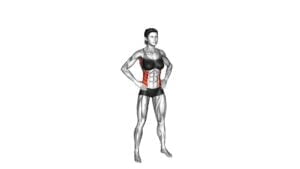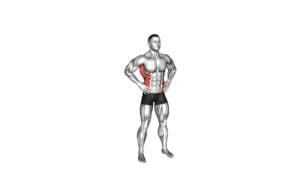Seated Sky Look – Video Exercise Guide & Tips

Get ready to improve your flexibility and strengthen your core with the Seated Sky Look exercise! In this video exercise guide, you'll learn the proper form and technique for this challenging move.
Watch This Exercise Video
Discover variations and modifications to suit your fitness level, and get valuable tips for maximizing your workout.
With this informative and concise guide, you'll be equipped with the knowledge and resources to take your fitness routine to new heights.
Let's get started!
Key Takeaways
- Improved flexibility
- Reduced tension and stiffness
- Enhanced posture
- Increased spinal mobility
Benefits of the Seated Sky Look
Experience the numerous benefits of the Seated Sky Look exercise. This exercise is highly effective in improving flexibility. Regularly practicing the Seated Sky Look can greatly increase your range of motion and overall flexibility.
One of the main benefits of this exercise is that it targets the muscles in your neck, shoulders, and upper back. By gently turning your head and looking up towards the sky, you're stretching and strengthening these muscles. This can help alleviate tension and stiffness in these areas, as well as improve your posture.
Additionally, the Seated Sky Look also promotes spinal mobility. As you twist your torso and look upwards, you're engaging your core muscles and mobilizing your spine. This can help reduce lower back pain and improve your overall spinal health.
Furthermore, this exercise can also improve your balance and coordination. By sitting on a stability ball or chair and focusing on maintaining your balance while performing the Seated Sky Look, you're challenging your proprioception and enhancing your ability to control your body's movements.
In conclusion, the Seated Sky Look exercise offers numerous benefits, including:
- Improved flexibility
- Reduced tension and stiffness
- Enhanced posture
- Increased spinal mobility
- Improved balance and coordination
Incorporate this exercise into your routine to experience these positive effects.
Proper Form and Technique
To perform the Seated Sky Look exercise correctly, follow these steps:
- Sit on a stability ball or chair with your feet flat on the ground.
- Keep your back straight and engage your core muscles.
- Place your hands on your hips or interlace your fingers behind your head.
- From this starting position, exhale and rotate your upper body to the right, allowing your gaze to follow the movement.
- Inhale as you return to the center and then exhale as you rotate to the left.
- Repeat this movement for the desired number of repetitions.
Proper form and technique are crucial for maximizing the benefits of the Seated Sky Look exercise. One common mistake to avoid is hunching your shoulders or rounding your back during the rotation. This can put unnecessary strain on your neck and spine. Instead, focus on maintaining a tall posture and keeping your spine neutral throughout the movement.
The Seated Sky Look primarily targets the muscles of your core, including the obliques, rectus abdominis, and transverse abdominis. It also engages the muscles of your back, shoulders, and hips, helping to improve overall stability and posture.
Now that you understand the proper form and technique for the Seated Sky Look, let's move on to exploring some variations and modifications of this exercise that can add variety and challenge to your workout routine.
Variations and Modifications
Try adding resistance to the Seated Sky Look exercise by holding a dumbbell or medicine ball in front of your chest. This variation adds an extra challenge to your core and upper body muscles. As you lift your legs up and rotate your torso, the added weight will increase the intensity of the exercise.
There are several other variations and modifications you can try to customize the Seated Sky Look to your fitness level and goals. If you're a beginner, you can start by doing the exercise without any added resistance. Focus on mastering the movement and maintaining proper form before progressing to more challenging variations.
For those looking for progressions and adaptations, you can try holding the weight overhead instead of in front of your chest. This will engage your shoulders and upper back muscles to a greater extent. You can also increase the weight of the dumbbell or medicine ball as you get stronger.
Remember to always listen to your body and make modifications as needed. If you have any injuries or limitations, consult with a fitness professional for appropriate modifications.
Now that you have learned about the variations and modifications for the Seated Sky Look, let's move on to some tips for maximizing your workout.
Tips for Maximizing Your Workout
To get the most out of your workout, incorporate these tips into your routine.
First, focus on workout intensity. Instead of spending hours at the gym, try to maximize your workout in a shorter amount of time. High-intensity interval training (HIIT) is a great way to achieve this. By alternating between intense bursts of exercise and short periods of rest, you can burn more calories and improve cardiovascular fitness in less time.
Another tip is to prioritize time management. Plan your workouts ahead of time and stick to a schedule. This will help you stay consistent and make the most of the time you have available. If you're short on time, consider incorporating circuit training or compound exercises that work multiple muscle groups simultaneously. This way, you can get a full-body workout in a shorter amount of time.
As you implement these tips, remember to listen to your body and adjust your workout intensity accordingly. Push yourself, but also know your limits to avoid injury. By maximizing your workout intensity and managing your time effectively, you can make the most of your exercise routine and achieve your fitness goals.
In the next section, we'll discuss recommended equipment and resources that can enhance your seated sky look workout experience.
Recommended Equipment and Resources
To enhance your seated sky look workout experience, here are some recommended equipment and resources to consider.
When it comes to seated sky look variations, having a stable and comfortable chair is essential. Look for a chair with a supportive backrest and cushioned seat to ensure proper posture and comfort during your workout. Additionally, using a yoga mat or exercise mat can provide extra cushioning and grip during floor exercises or stretches.
Another useful piece of equipment to consider is a resistance band. This versatile tool can add resistance to your seated sky look movements, making them more challenging and effective. Resistance bands come in different levels of resistance, so choose one that matches your fitness level and goals.
In terms of resources, online platforms such as YouTube and fitness apps offer a wide range of seated sky look workouts and tutorials. You can find videos demonstrating different variations of the exercise, providing guidance on proper form and technique. These resources can help you diversify your workout routine and keep you motivated.
Frequently Asked Questions
How Many Calories Can I Burn by Doing the Seated Sky Look Exercise?
You can burn calories and enjoy exercise benefits by doing the seated sky look exercise. It's a simple yet effective exercise that targets your core muscles and improves spinal mobility.
By engaging your abs and extending your arms overhead, you can strengthen your core and burn calories. This exercise also helps improve posture and flexibility.
Incorporating the seated sky look into your fitness routine can contribute to your overall calorie burning and fitness goals.
Can the Seated Sky Look Exercise Help Improve Posture?
The seated sky look exercise can definitely help improve your posture. By incorporating this exercise into your daily stretching routine, you can strengthen the muscles in your neck, upper back, and shoulders, which can help you maintain a more upright and aligned posture.
It's a simple yet effective movement that can make a big difference in your overall posture and spinal alignment. Plus, it's easy to modify for individuals with limited mobility, making it accessible for everyone.
Is the Seated Sky Look Suitable for People With Lower Back Pain?
The seated sky look exercise can provide relief for those with lower back pain. By gently stretching the spine and engaging the core muscles, it helps improve flexibility and stability in the lower back region.
However, it's always important to listen to your body and modify the exercise accordingly. If you experience discomfort or pain, consult with a healthcare professional for alternative exercises or modifications that are suitable for your condition.
Can the Seated Sky Look Exercise Help With Stress Relief?
The seated sky look exercise can be a helpful tool for stress relief. By gently stretching your neck and upper back, this exercise promotes relaxation and releases tension. It can also improve your posture and increase flexibility.
Additionally, there are variations of the seated sky look that can target specific areas of tension, such as the shoulders or upper back. Incorporating this exercise into your routine can provide you with the benefits of stress relief and improved flexibility.
Are There Any Specific Breathing Techniques to Follow While Performing the Seated Sky Look Exercise?
When performing the seated sky look exercise, it's important to follow specific breathing techniques. Deep, slow breaths can help you relax and enhance the benefits of this exercise.
By inhaling deeply through your nose and exhaling slowly through your mouth, you can promote a sense of calm and reduce stress. This technique can also improve your focus and help you feel more present in the moment.
Conclusion
In conclusion, the seated sky look is an effective exercise that offers numerous benefits for your upper body and core strength. By maintaining proper form and technique, you can maximize the results of this exercise.
Remember to listen to your body and make any necessary modifications or variations to suit your fitness level. By following these tips and utilizing the recommended equipment and resources, you can enhance your workout and achieve your fitness goals.

Author
Years ago, the spark of my life’s passion ignited in my mind the moment I stepped into the local gym for the first time. The inaugural bead of perspiration, the initial endeavor, the very first surge of endorphins, and a sense of pride that washed over me post-workout marked the beginning of my deep-seated interest in strength sports, fitness, and sports nutrition. This very curiosity blossomed rapidly into a profound fascination, propelling me to earn a Master’s degree in Physical Education from the Academy of Physical Education in Krakow, followed by a Sports Manager diploma from the Jagiellonian University. My journey of growth led me to gain more specialized qualifications, such as being a certified personal trainer with a focus on sports dietetics, a lifeguard, and an instructor for wellness and corrective gymnastics. Theoretical knowledge paired seamlessly with practical experience, reinforcing my belief that the transformation of individuals under my guidance was also a reflection of my personal growth. This belief holds true even today. Each day, I strive to push the boundaries and explore new realms. These realms gently elevate me to greater heights. The unique combination of passion for my field and the continuous quest for growth fuels my drive to break new ground.



